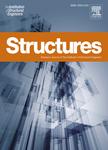版权所有:内蒙古大学图书馆 技术提供:维普资讯• 智图
内蒙古自治区呼和浩特市赛罕区大学西街235号 邮编: 010021

作者机构:Ningxia Univ Sch Civil & Hydraul Engn Yinchuan 750021 Peoples R China Dongguan Univ Technol Sch Environm & Civil Engn Dongguan 523808 Peoples R China
出 版 物:《STRUCTURES》 (Structures)
年 卷 期:2023年第50卷
页 面:39-51页
核心收录:
基 金:National Natural Science Foundation of China [52268033/51908129] Project of Outstanding Youth Program of Natural Science Foundation of Ningxia [2021AAC05003] Natural Science Foundation of Ningxia [2022AAC03073]
主 题:Adjacent eccentric structures Torsional response Eccentric arrangement of damper Damping control PSO optimization algorithm
摘 要:Adjacent structures connected by dampers can effectively prevent collisions and attenuate the response of these structures. An early simplified model was investigated using a two-dimensional model. However, this model disregarded the effect of torsional response due to eccentricity. The eccentric arrangement of dampers owing to the non-parallel centroid between adjacent structures has not been considered in existing research. Here, the vibration equation of adjacent structures connected to a Kelvin damper was derived to study the torsional response under earthquake excitation. Furthermore, a PSO (Particle Swarm Optimization) algorithm was adopted to conduct a parametric study. Additionally, the damping effects of adjacent structures were compared using various damper layout schemes. The results show that the structural displacement was reduced by 50% by connecting dampers between adjacent structures. Placing dampers in the middle of a structure has a greater damping control effect than placing them on the side columns. However, the optimal damper layout must be chosen based on the diverse eccentric combinations and control goals of the adjacent structures. A damper can be arranged eccentrically to increase its damping control effect on an adjacent structures by 50% to 75%. The weakening of the edge effect on the damping effect should be considered when choosing the control objective for damper optimization. This weakening impact can reduce the damping effects by 50% and lead to greater deformation of the side column. The response of adjacent structures can be controlled macroscopically by uti-lizing the translation-torsional energy ratio as the control goal. However, a high fundamental frequency ratio of adjacent structures should be avoided.